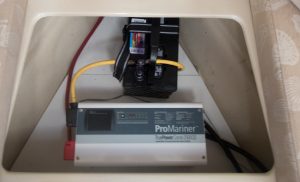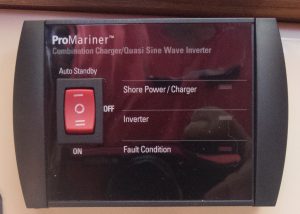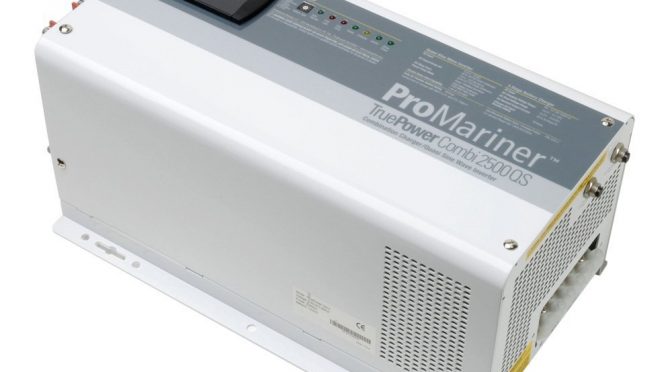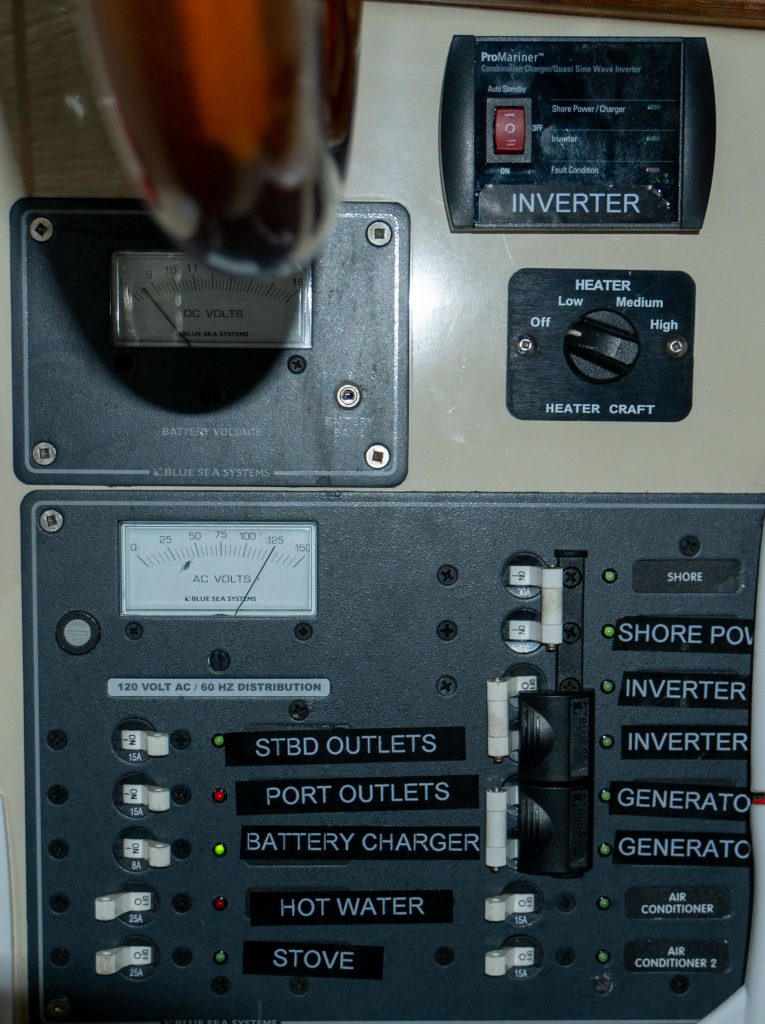I purchased a Promariner 2500 alternator that was capable of supporting occasional loads such as morning coffee and telephone battery charging without running the generator. While underway, it will operate the air conditioner or other heavy loads.

The New Inverter is mounted under the forward bunk in a dry and otherwise unused space. It is powered directly off a relocated battery that is part of the house bank using very short cables.
The normal method for powering and controlling an inverter is to place it in the path from the shore power inlet to the circuit breaker panel. That way, when shore power is disconnected, the inverter automatically picks up the load. We did not want this because shore power is often unreliable and should it fail in the middle of a hot night, we were concerned the inverter would kill the batteries trying to cool the boat.
We wanted a little more power management. The standard Mace 2.5 KW generator will operate the air conditioner and one burner of the stove while charging the batteries and still have a little extra power. The shore power cable will do all that and run the microwave without exceeding the 30 amp (3.6 KW) supply in most marinas.
This means that everything will run on shore power, lots of stuff will run on the Mace Generator and only some stuff will run on the inverter at anchor with more on the inverter when the engine is running.. I wanted to make it easy to run the correct stuff at the right time.
Here is the original AC distribution panel after I added the new Inverter control.
When I originally installed the inverter, I attempted to operate the equipment using the inverter-supplied switch that is intended to switch the inverter on automatically when the shore power is interrupted. Note, the top air conditioner breaker operates a rooftop portable that is not installed for the Winter and is ot supplied with this boat. I can help you purchase/install one if you wish as they are available at Home Depot for about $150.
Rather than relying on an automatic switch, I extended the “lockout” switch that Ranger supplied to switch between the generator and shore power. I added a third position to support the inverter. You can see on the right that either the Shore Power, Inverter or Generator can be selected, but only one at a time.
The meter located above the switches shows the voltage present in the boat. Normally this is 120 volts, but it can vary 10 or so volts either way without a problem. This meter may dip briefly when the air conditioner starts.
The bottom air conditioner switch operates the larger boat air conditioner. The boat air conditioner will operate on shore power or the generator but not the inverter.
The top air conditioner uses less power and can operate on the inverter while underway, if installed.
The inverter has a new control located just above the AC distribution panel next to the helm seat. Position 2, the bottom position, is selected when the the inverter is required to be on. The top position operates the inverter when power is demanded, but turns off the inverter when no power is required.
 The middle position, “OFF” delivers no power, even when the generator is running.To use the inverter alone, select “Generator” on the AC distribution panel and place the inverter control in the “II” position. “Inverter”.
The middle position, “OFF” delivers no power, even when the generator is running.To use the inverter alone, select “Generator” on the AC distribution panel and place the inverter control in the “II” position. “Inverter”.
I hope this is less confusing to you than it is to me.

